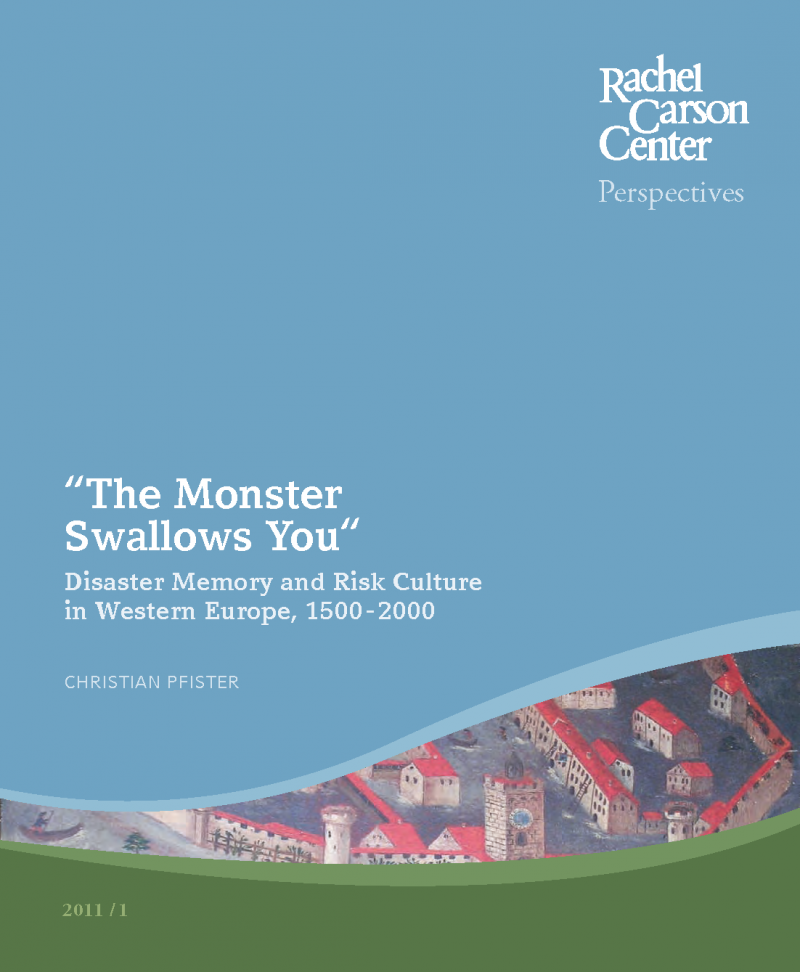About this issue
In this issue of RCC Perspectives, Christian Pfister examines disaster memory and risk culture. In contrast to the memory of war, the memory of natural disaster is markedly short-lived in a globalized world, yet such memory should be preserved in order to minimize the impact of similar disasters in the future. Pfister discusses a variety of disasters, including avalanches, earthquakes, and floods. He highlights how some disasters, like the series of violent winter storms which ravaged western and central Europe in January 1739, are not inscribed in cultural memory at all. In addition, Pfister shows how disaster memorials like high water marks can serve as visual expressions of institutional risk memory. However, he also notes that the “disaster gap”—a long period with few or no disasters in a country or region—can lead to the loss of functional disaster memory.
How to cite: Pfister, Christian, “ ‘The Monster Swallows You’: Disaster Memory and Risk Culture in Western Europe, 1500–2000,” RCC Perspectives 2011, no 1. doi.org/10.5282/rcc/5583.

Content


